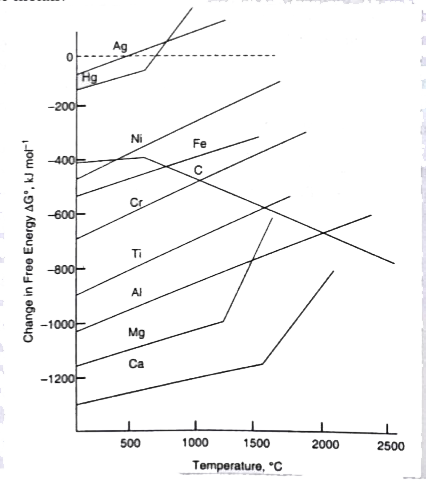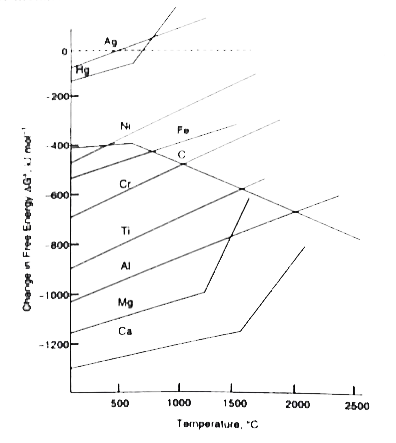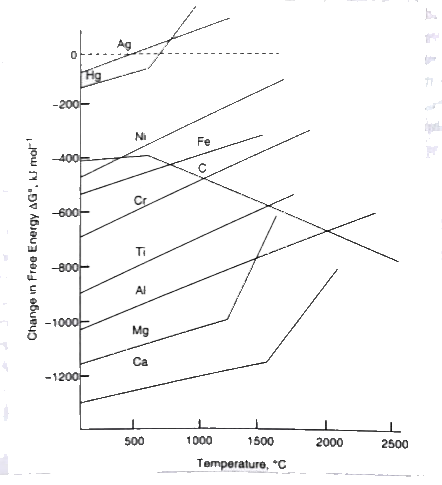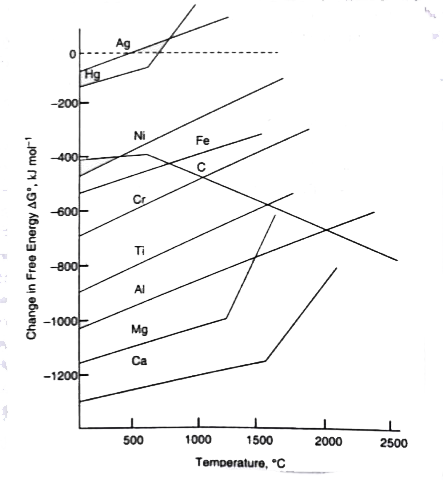For a chemical reaction, the free energy change (ΔG) is negative. The reaction is
The correct Answer is:A
To solve the question regarding the free energy change (ΔG) and its implications for a chemical reaction, we can follow these steps:
Step 1: Understand the Concept of Free Energy Change (ΔG)
The free energy change (ΔG) is a thermodynamic quantity that indicates the spontaneity of a reaction. It is defined as the difference between the enthalpy change (ΔH) and the product of the temperature (T) and the entropy change (ΔS) of the system.
Step 2: Recall the Significance of ΔG
- If ΔG < 0 (negative), the reaction is spontaneous.
- If ΔG = 0, the system is at equilibrium.
- If ΔG > 0 (positive), the reaction is non-spontaneous.
Step 3: Apply the Given Information
In the question, it is stated that ΔG is negative. This indicates that the reaction is spontaneous.
Step 4: Relate ΔG to Enthalpy and Entropy
The relationship can be expressed as:
ΔG=ΔH−TΔS
Where:
- ΔH is the change in enthalpy,
- T is the temperature in Kelvin,
- ΔS is the change in entropy.
For a reaction to be spontaneous (ΔG < 0), it can occur under conditions where:
- ΔH is negative (exothermic reaction) and ΔS is positive (increase in disorder), or
- ΔH is positive but sufficiently outweighed by a large positive ΔS at high temperatures.
Step 5: Conclude the Type of Reaction
Since we have established that ΔG is negative, we conclude that the reaction is spontaneous.
Final Answer
The reaction is spontaneous.
---
The free energy change (ΔG) is a thermodynamic quantity that indicates the spontaneity of a reaction. It is defined as the difference between the enthalpy change (ΔH) and the product of the temperature (T) and the entropy change (ΔS) of the system.
- If ΔG < 0 (negative), the reaction is spontaneous.
- If ΔG = 0, the system is at equilibrium.
- If ΔG > 0 (positive), the reaction is non-spontaneous.
In the question, it is stated that ΔG is negative. This indicates that the reaction is spontaneous.
The relationship can be expressed as:
ΔG=ΔH−TΔS
Where:
- ΔH is the change in enthalpy,
- T is the temperature in Kelvin,
- ΔS is the change in entropy.
- ΔH is negative (exothermic reaction) and ΔS is positive (increase in disorder), or
- ΔH is positive but sufficiently outweighed by a large positive ΔS at high temperatures.
Since we have established that ΔG is negative, we conclude that the reaction is spontaneous.
The reaction is spontaneous.
Similar Questions
Knowledge Check
In a chemical reaction, total energy that is available for use in other reactions is referred to as :
AenthalpyBenergy of activationCentropyDfree energy
For a chemical reaction,ΔH is negative and ΔS is negative and ΔS is negative . This reaction is
View SolutionFor a sponaneous reaction, the free energy change must be negative, ΔG=ΔH−TΔS,ΔH is the enthalpy change during the reaction. T is the absolute temperature, and ΔS is the change in entropy during the reaction. Consider a reaction such as the formation of an oxide
M+O2→MO
Dioxygen is used up in the course of this reaction. Gases have a more random structure (less ordered) than liquid or solids. Consequently gases have a higher entropy than liquids and solids. In this reaction S (entropy or randomness) decreases, hence ΔS is negative. Thus, if the temperature is raised then TΔS becomes more negative,Since, TΔS is substracted in the equation, then ΔG becomes less negative. Thus, the free energy change increases with the increase in temperature.
The free energy changes that occur when one mole of common reactant (in this case dioxygen) is used may be plotted graphically aginst temperature for a number of reactions of metals to their oxides. The following plot is called an Ellingham diagram for metal oxide. Understanding of Ellingham diagram is extremely important for the efficient extraction of metals.

Free energy change of Hg and Mg for the convertion to oxides the slpe of ΔG vsT has been changed above the boiling points of the given metal because :
View SolutionFor a sponaneous reaction, the free energy change must be negative, ΔG=ΔH−TΔS,ΔH is the enthalpy change during the reaction. T is the absolute temperature, and ΔS is the change in entropy during the reaction. Consider a reaction such as the formation of an oxide
M+O2→MO
Dioxygen is used up in the course of this reaction. Gases have a more random structure (less ordered) than liquid or solids. Consequently gases have a higher entropy than liquids and solids. In this reaction S (entropy or randomness) decreases, hence ΔS is negative. Thus, if the temperature is raised then TΔS becomes more negative,Since, TΔS is substracted in the equation, then ΔG becomes less negative. Thus, the free energy change increases with the increase in temperature.
The free energy changes that occur when one mole of common reactant (in this case dioxygen) is used may be plotted graphically aginst temperature for a number of reactions of metals to their oxides. The following plot is called an Ellingham diagram for metal oxide. Understanding of Ellingham diagram is extremely important for the efficient extraction of metals.

For the conversion of Ca(s) to Ca(s) which of the following represent the ΔG vs. T ?
View SolutionFor a sponaneous reaction, the free energy change must be negative, ΔG=ΔH−TΔS,ΔH is the enthalpy change during the reaction. T is the absolute temperature, and ΔS is the change in entropy during the reaction. Consider a reaction such as the formation of an oxide
M+O2→MO
Dioxygen is used up in the course of this reaction. Gases have a more random structure (less ordered) than liquid or solids. Consequently gases have a higher entropy than liquids and solids. In this reaction S (entropy or randomness) decreases, hence ΔS is negative. Thus, if the temperature is raised then TΔS becomes more negative,Since, TΔS is substracted in the equation, then ΔG becomes less negative. Thus, the free energy change increases with the increase in temperature.
The free energy changes that occur when one mole of common reactant (in this case dioxygen) is used may be plotted graphically aginst temperature for a number of reactions of metals to their oxides. The following plot is called an Ellingham diagram for metal oxide. Understanding of Ellingham diagram is extremely important for the efficient extraction of metals.

Which of the following elements can be prepared by heating the oxide above 400∘C ?
View SolutionFor a sponaneous reaction, the free energy change must be negative, ΔG=ΔH−TΔS,ΔH is the enthalpy change during the reaction. T is the absolute temperature, and ΔS is the change in entropy during the reaction. Consider a reaction such as the formation of an oxide
M+O2→MO
Dioxygen is used up in the course of this reaction. Gases have a more random structure (less ordered) than liquid or solids. Consequently gases have a higher entropy than liquids and solids. In this reaction S (entropy or randomness) decreases, hence ΔS is negative. Thus, if the temperature is raised then TΔS becomes more negative,Since, TΔS is substracted in the equation, then ΔG becomes less negative. Thus, the free energy change increases with the increase in temperature.
The free energy changes that occur when one mole of common reactant (in this case dioxygen) is used may be plotted graphically aginst temperature for a number of reactions of metals to their oxides. The following plot is called an Ellingham diagram for metal oxide. Understanding of Ellingham diagram is extremely important for the efficient extraction of metals.

As per the Ellingham diagram of oxides which of the following conclusion is true ?
View SolutionWhat is the free energy change (ΔG) for galvanic and electrolytic cel ?
View SolutionFor the reaction, NH4Cl(s)→NH3(g)+HCl(g) at 25∘C, enthalpy change ΔH=+177kJmol−1 and entropy change ΔS=+285Jmol−1K−1. Calculate the free energy change ΔG at 25∘C and predict whether the reaction is spontaneous or not.
View Solution
